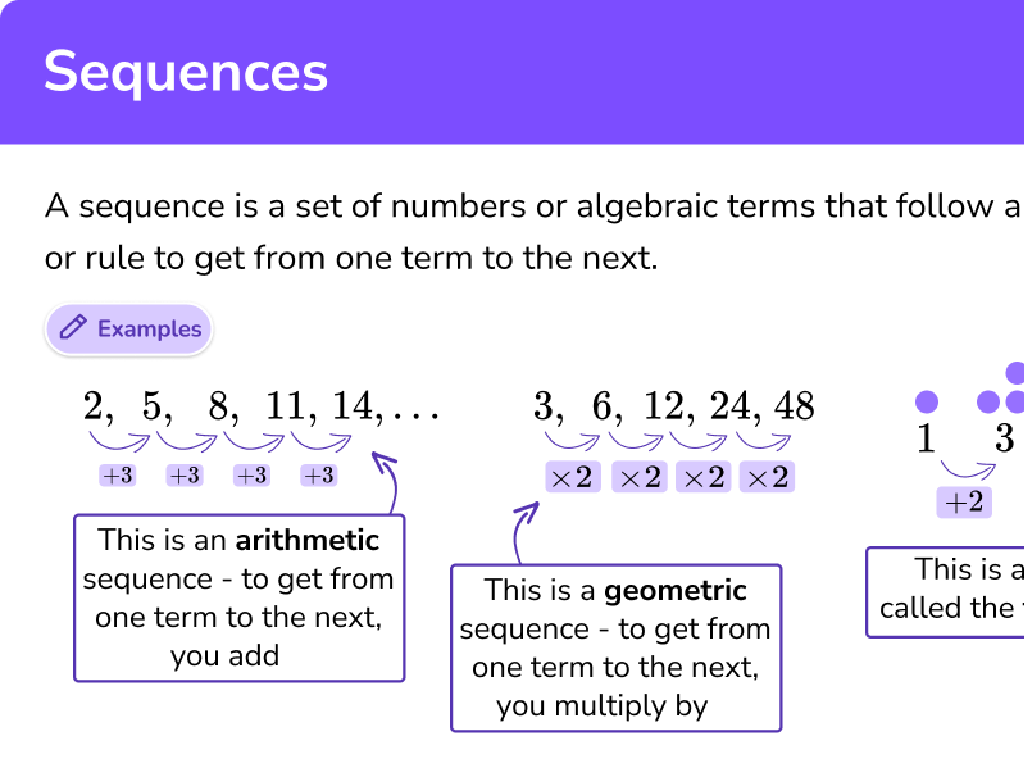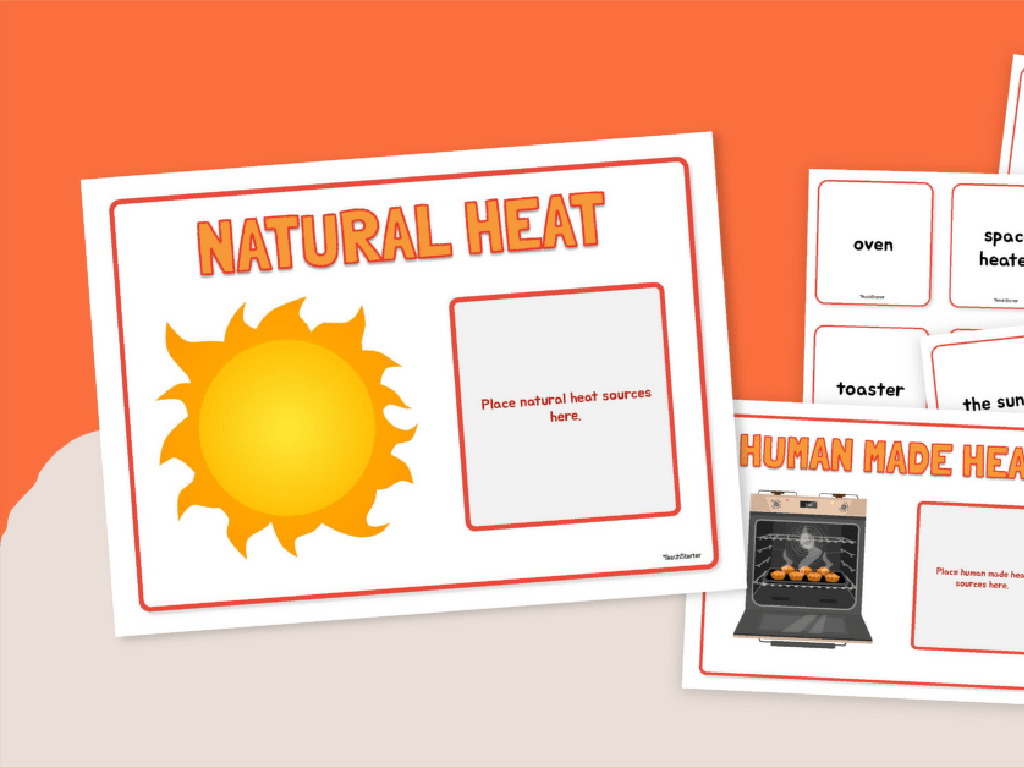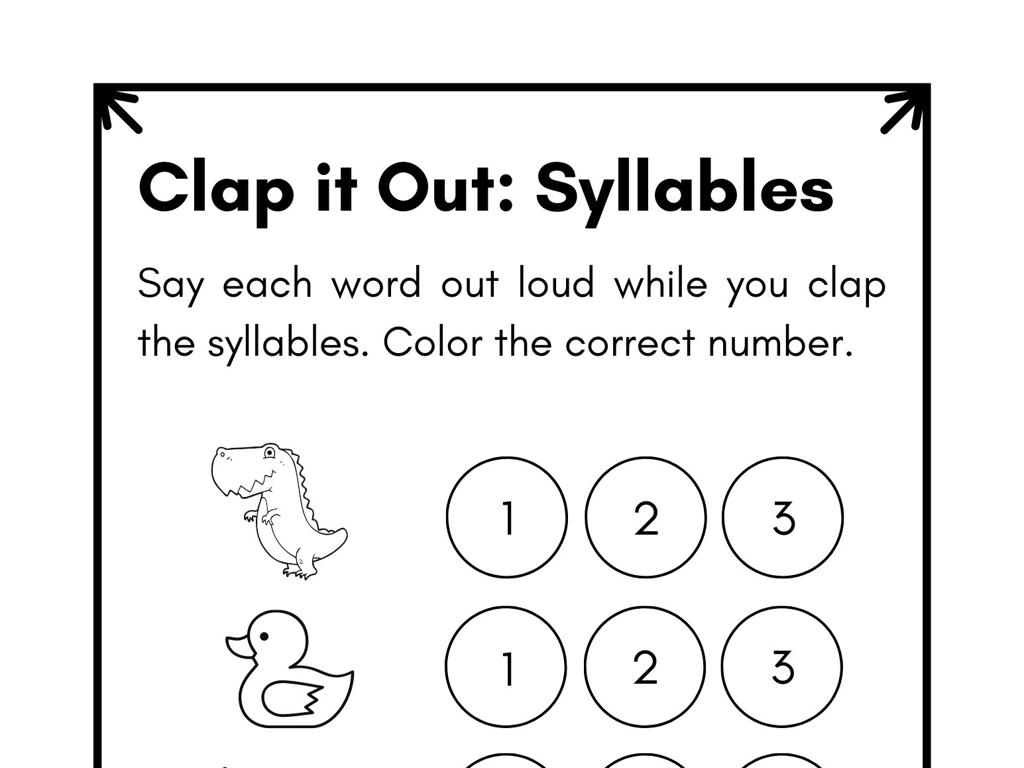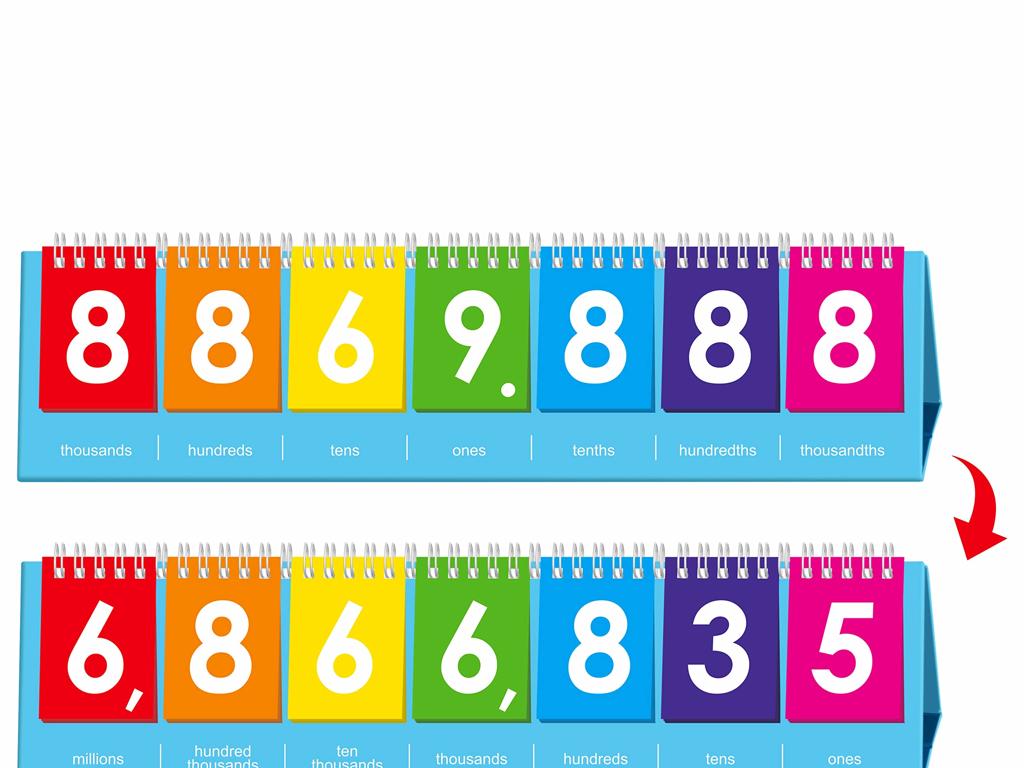Place Values In Decimal Numbers
Subject: Math
Grade: Fourth grade
Topic: Decimals
Please LOG IN to download the presentation. Access is available to registered users only.
View More Content
Welcome to Decimals!
– Explore numbers beyond the decimal
– Numbers to the right of the decimal show parts of a whole, like 0.5 in half a dollar
– Decimals in everyday life
– Use decimals when dealing with money, measurements, and more
– Quick review of decimal basics
– A decimal is a way to represent fractions and parts of numbers
– Understanding place values
– Each place after the decimal represents tenths, hundredths, thousandths, etc.
|
This slide introduces students to the concept of decimals and their place values. Begin by explaining that numbers to the right of the decimal point represent parts smaller than one whole, using relatable examples such as money (half a dollar is $0.50). Highlight how decimals are used in everyday life, for instance in measuring ingredients for a recipe or calculating change when shopping. Review the definition of a decimal as a fraction or part of a number. Finally, explain the place value system for decimals, emphasizing the tenths, hundredths, and thousandths places. Use visual aids like a place value chart to help students visualize the concept. Encourage students to think of other examples where they encounter decimals in their daily lives.
Understanding Place Value in Decimals
– What is Place Value?
– The position of a digit in a number determines its value.
– Each place is 10 times the right
– Moving left, each place is 10x larger; moving right, it’s 10x smaller.
– Examples: Ones, Tens, Hundreds
– 1 in 150 has a different value than 1 in 105.
– Decimal places: Tenths, Hundredths
– Just like whole numbers, but after the decimal point.
|
This slide introduces the concept of place value, which is fundamental to understanding numbers and mathematics. Place value refers to the value of a digit based on its position within a number. Emphasize that as we move from right to left, each place is ten times greater than the one before it. Provide clear examples using ones, tens, and hundreds to illustrate whole numbers, and tenths and hundredths for decimal numbers. Encourage students to practice by identifying the place value of digits in various numbers and to understand that this system applies both to whole numbers and to the digits after a decimal point.
Exploring Decimal Place Values
– What are decimal place values?
– Numbers to the right of the decimal point
– Tenths, Hundredths, Thousandths
– Each place has a value ten times smaller than the one before it
– Comparing decimals and whole numbers
– Decimal places decrease in value as we move right, similar to whole numbers decreasing in value as we move left from the decimal
– Practice with decimal places
|
This slide introduces students to the concept of decimal place values, focusing on the tenths, hundredths, and thousandths places. Begin by explaining that just as whole numbers have place values (ones, tens, hundreds), decimals have place values to the right of the decimal point. Emphasize that each step to the right in decimal places represents a value ten times smaller than the previous one, mirroring how whole number places get ten times bigger as we move left. Use visual aids to compare the place values of decimals to whole numbers to solidify understanding. Conclude with practice examples where students identify and write down the place value of digits in various decimal numbers.
Writing Decimals: Understanding Place Values
– Writing numbers with decimals
– Decimals show parts of a whole, like 0.5 for half.
– Using zeros in place values
– Zeros show a place is empty, like 0.05 vs 0.50.
– Practice writing decimals
– Try writing 0.3, 0.25, and 0.125 in words.
– Decimals in words and numbers
– Convert ‘three tenths’ and ‘fifty-four hundredths’ to numbers.
|
This slide introduces students to the concept of writing decimals, emphasizing the importance of place value and the role of zeros. Begin by explaining that decimals represent fractions of a whole, using real-life examples such as money or measurements. Highlight how zeros are used to signify that a particular place value is empty, which can affect the value of the number. Provide practice opportunities by asking students to write decimals in both numerical form and word form, reinforcing their understanding of place values. Encourage students to share their answers and discuss any challenges they encounter.
Comparing Decimal Values
– Learn to compare decimals
– Use place value for comparison
– Look at the highest place value first to decide which is larger or smaller
– Activity: Order decimals
– Arrange 0.3, 0.56, 0.6, 0.07 from least to greatest
– Understanding greater and lesser
|
This slide introduces the concept of comparing decimal numbers. Students will learn how to determine if a decimal is greater or lesser by using place value, which is a fundamental skill in understanding decimals. The activity involves arranging a set of given decimals in order from the smallest to the largest, which will help reinforce their understanding of place value. For the activity, provide clear instructions and ensure that students understand how to compare each place value, starting from the leftmost digit. Possible variations of the activity could include using different sets of numbers, comparing decimals in a practical context like money, or using visual aids like number lines.
Rounding Decimals
– Understanding rounding decimals
– Rounding means finding the closest value
– Rounding to nearest whole number
– If decimal is 5 or more, round up
– Rounding to tenths, hundredths
– Smaller place values get more precise
– Practice with examples
|
This slide introduces the concept of rounding decimals, which is a way to simplify numbers while maintaining a value close to the original number. Start by explaining that rounding helps us estimate numbers quickly. When rounding to the nearest whole number, if the decimal part is 0.5 or higher, we round up. For tenths and hundredths, we look at the digit right after the place we’re rounding to decide if we round up or stay the same. Provide several examples for the students to work through, such as rounding 3.146 to the nearest whole number, tenths, and hundredths. Encourage students to explain their reasoning for rounding up or down in each example.
Adding and Subtracting Decimals
– Align decimal points vertically
– Place decimals one under the other by the point
– Add and subtract as whole numbers
– Ignore the decimal point and perform the operation
– Solve practice problems
– Use example problems to apply skills
– Check your work carefully
– Review answers for mistakes in decimal placement
|
This slide introduces students to the process of adding and subtracting decimal numbers. Emphasize the importance of lining up the decimal points to ensure accurate placement of digits. Teach students to treat the decimals like whole numbers during the calculation, ignoring the decimal point temporarily. Provide a set of practice problems for students to apply what they’ve learned, and remind them to double-check their work, paying special attention to the correct placement of the decimal point in their final answer. Encourage students to verbalize their thought process as they solve each problem to reinforce their understanding.
Class Activity: Create a Decimal Place Value Chart
– Craft your own place value chart
– Add numbers from our class discussion
– Partner up and discuss your chart
– Explain your reasoning to your partner
– Share why you placed numbers where you did
|
This activity is designed to reinforce the concept of decimal place values by having students create and fill in their own charts. Provide students with a blank chart template that includes places for ones, tenths, hundredths, and thousandths. During the class, call out different numbers and have students place them in the correct spot on their charts. After completing the chart, students will pair up to compare and discuss their charts with each other. Encourage them to explain their thought process for placing each number, which will help solidify their understanding of decimal place values. As a teacher, circulate the room to listen to discussions and provide guidance where necessary. Possible variations for different students could include using larger or smaller numbers, including negative decimals, or even having students come up with their own numbers to place on the chart.
Wrapping Up: Decimal Place Values
– Recap of decimal places
– Review tenths, hundredths, thousandths
– Importance of decimals
– Used in money, measurements, and more
– Next: Multiply & divide decimals
– Understanding place values helps in these operations
– Review with practice problems
|
As we conclude today’s lesson, we’ll review the place values in decimal numbers, emphasizing the tenths, hundredths, and thousandths positions. Understanding decimals is crucial as they are used in everyday life, such as in dealing with money and measurements. It’s also foundational for future math concepts, including multiplying and dividing decimals, which will be our focus in the next lesson. To solidify today’s learning, students should complete a set of practice problems that reinforce their understanding of decimal place values. Encourage students to explain why decimals are important and how they relate to whole numbers. This discussion will help them grasp the significance of decimals in various contexts.
Homework: Mastering Decimal Place Values
– Complete the decimal worksheet
– Practice problems on place values
– Round decimals to nearest tenth, hundredth
– Use rounding rules we learned in class
– Write a reflection on today’s lesson
– Think about how place values help in math
– Share your learning experience
|
This homework assignment is designed to reinforce today’s lesson on decimal place values. The worksheet provides a variety of problems that will help students practice identifying and working with decimals in different place value positions. Rounding decimals is an essential skill that aids in estimation and simplifies numbers for easier calculation. Encourage students to reflect on their learning by writing a short paragraph about what they understood from the lesson. This reflection will help them consolidate their knowledge and provide valuable feedback on their learning process. In the next class, ask volunteers to share their reflections and discuss any challenges they faced.






